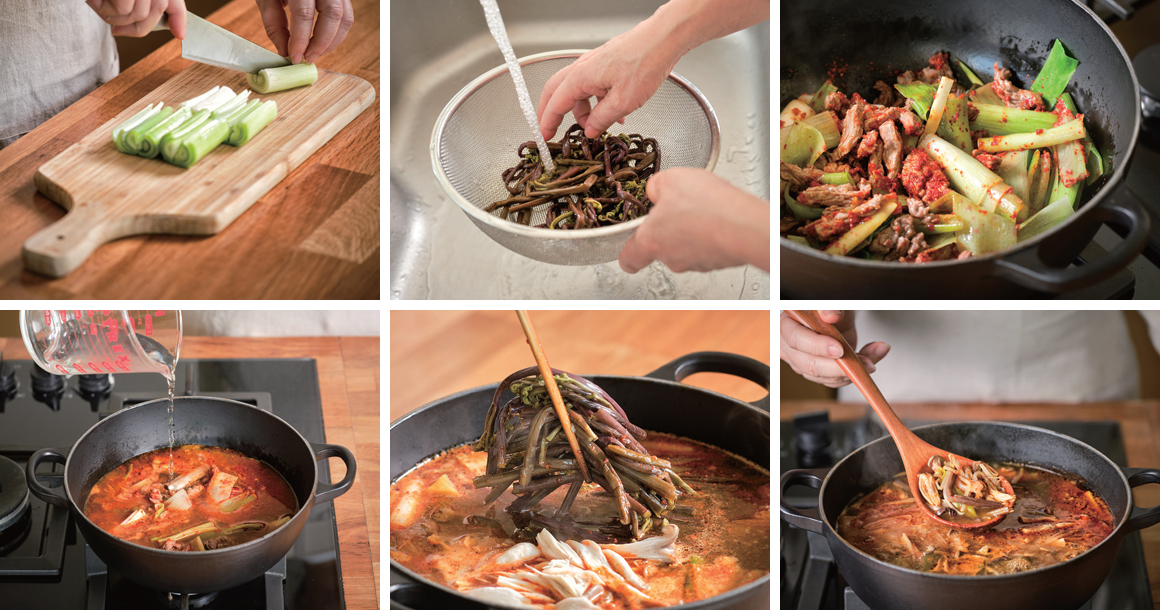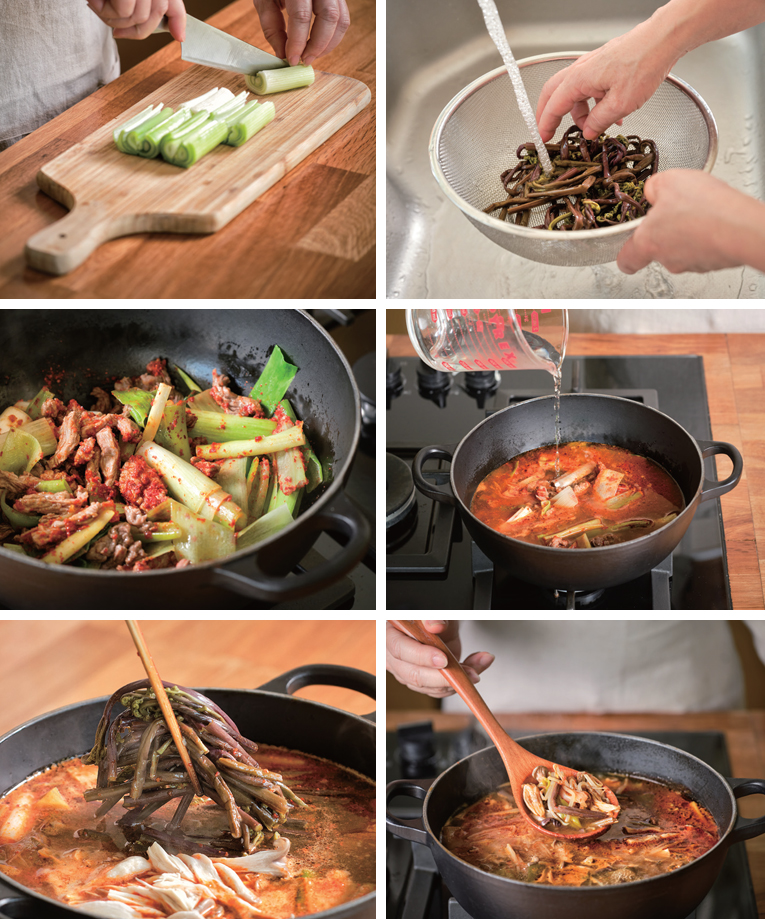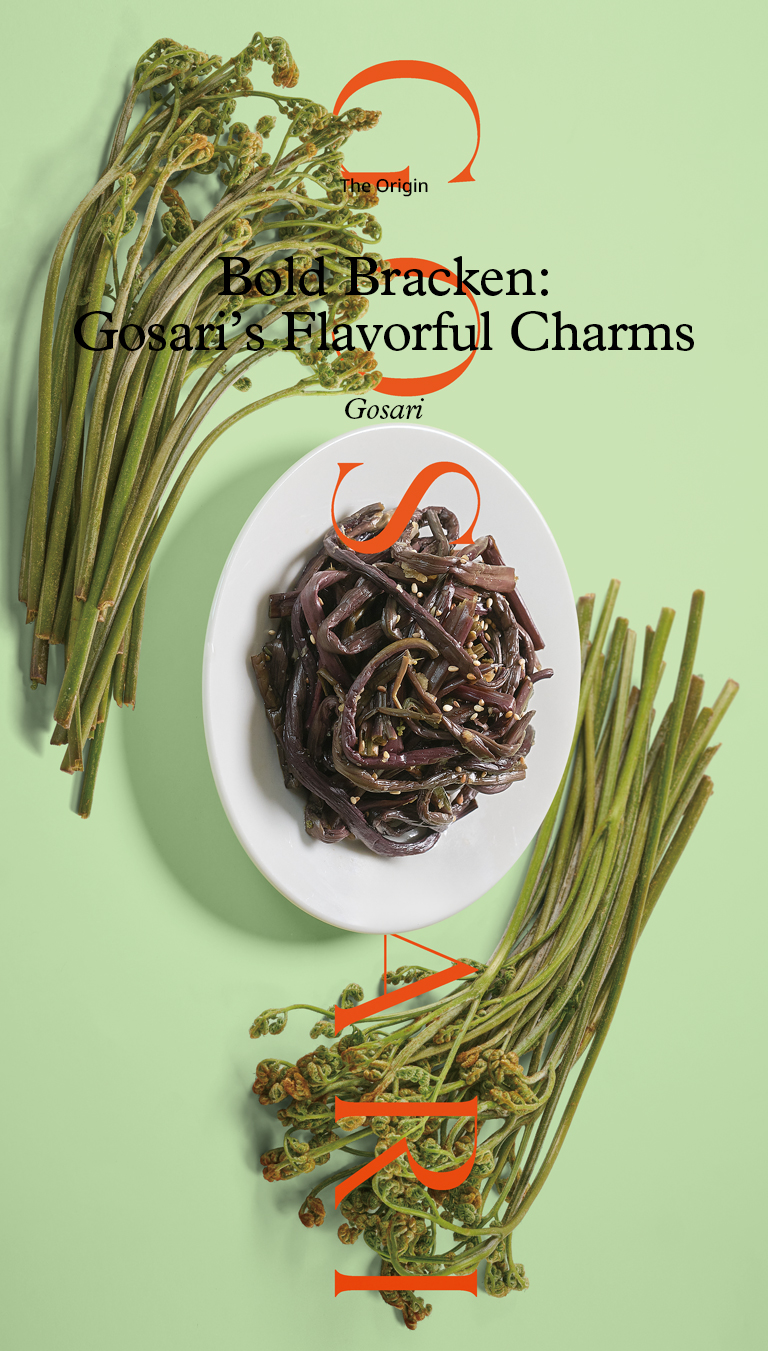
Bracken grows in abundance in Korea, and spring shoots, known as gosari, are not only edible, but also packed with flavor. A key ingredient for internationally popular dishes like bibimbap and yukgaejang (spicy beef soup), preparing gosari may be time-consuming—but its rich flavor and unique texture make the process especially rewarding.
Writer. Tim Alper
If you have a window seat when you fly over Korea, you may be surprised to see just how relentlessly mountainous the country is. From above, the nation looks like a patchwork of mountain ranges, many of which are covered in thick forests. Plains and wide open fields are few and far between.
How then, you may ask, did Koreans of old cultivate enough crops to feed their families? The answer lies in those very same mountainsides and forests. While Koreans have become experts at converting hilly slopes into rice paddies and vegetable patches, they are also famously resourceful foragers.
Indeed, even in the modern day—when supermarkets can be found on every corner—you will regularly see Koreans picking wild edible plants in both rural and urban areas.
Bracken (Pteridium aquilinum), scientists think, may well be the most common plant in the world. It grows on every continent, with the exception of Antarctica. And it positively thrives in Korea’s seemingly endless woodlands, rocky coastal areas and hillsides. To this day, residents of Jeju Island head to the countryside en masse in April-May to gather bracken shoots before they unfurl into small but fully fledged ferns.
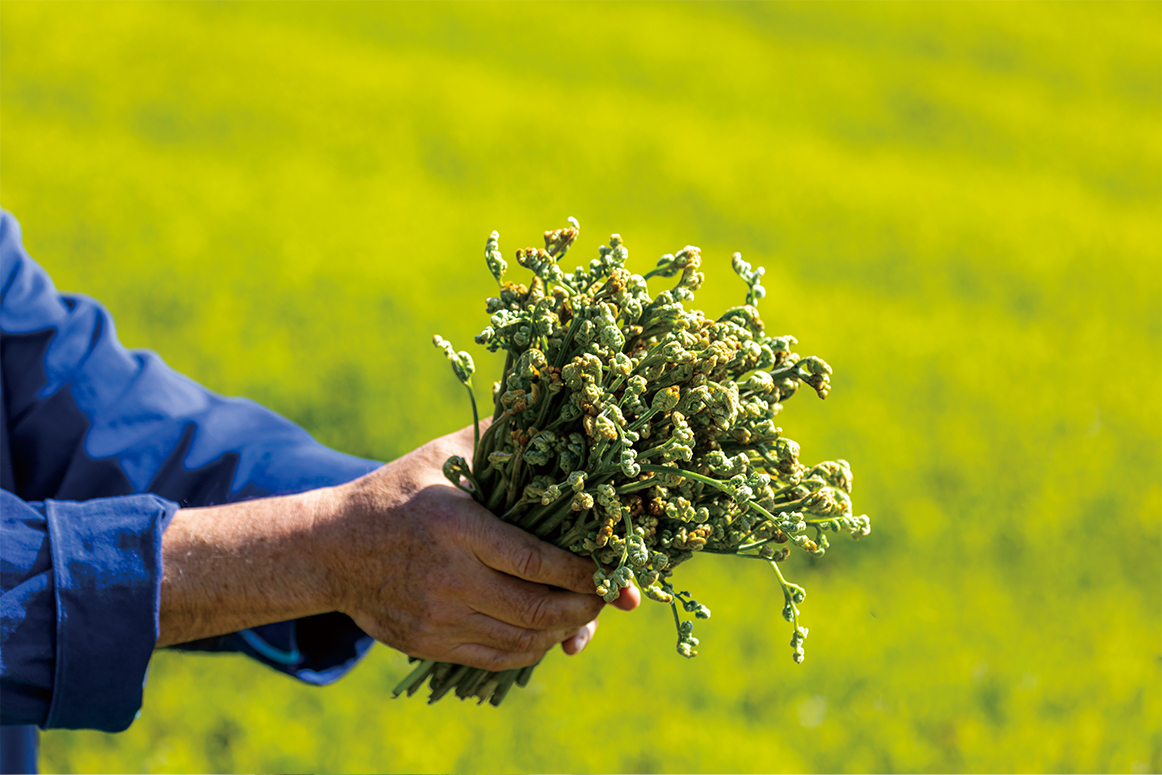 Gosari is harvested when its new shoots are still tightly coiled before the leaves unfurl. / © TongRo Images Inc.
Gosari is harvested when its new shoots are still tightly coiled before the leaves unfurl. / © TongRo Images Inc.
We do not know exactly when Korean foragers first began to collect and consume bracken, known as gosari in Korean. Raw bracken contains harmful chemicals, which is why Korean cooks long ago devised a simple but time-consuming way to prepare gosari. These methods are still in practice today.
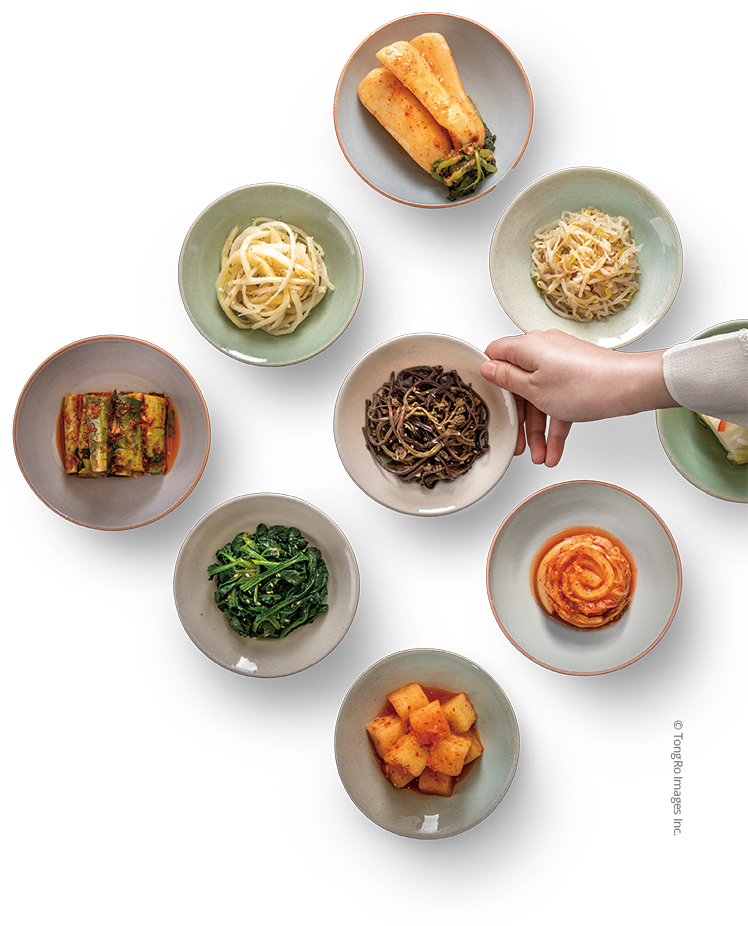
First, foragers exclusively pick the young shoots that appear in spring—known in English as fiddleheads. These are much more tender than more mature parts of the plant. Scientists also believe that fiddleheads have a lower content of potentially harmful compounds.
Next, cooks boil the fiddleheads in water for 10 minutes. A final preparatory step sees cooks soak gosari for at least 12 hours, periodically changing the water to flush away bitterness and toxins. The process turns the fiddleheads from their original deep green color to a distinctive brown-beige. Cooks then often sun-dry gosari, which helps it last longer in the pantry. They can then rehydrate the fiddleheads in water whenever they need to use them in the kitchen.
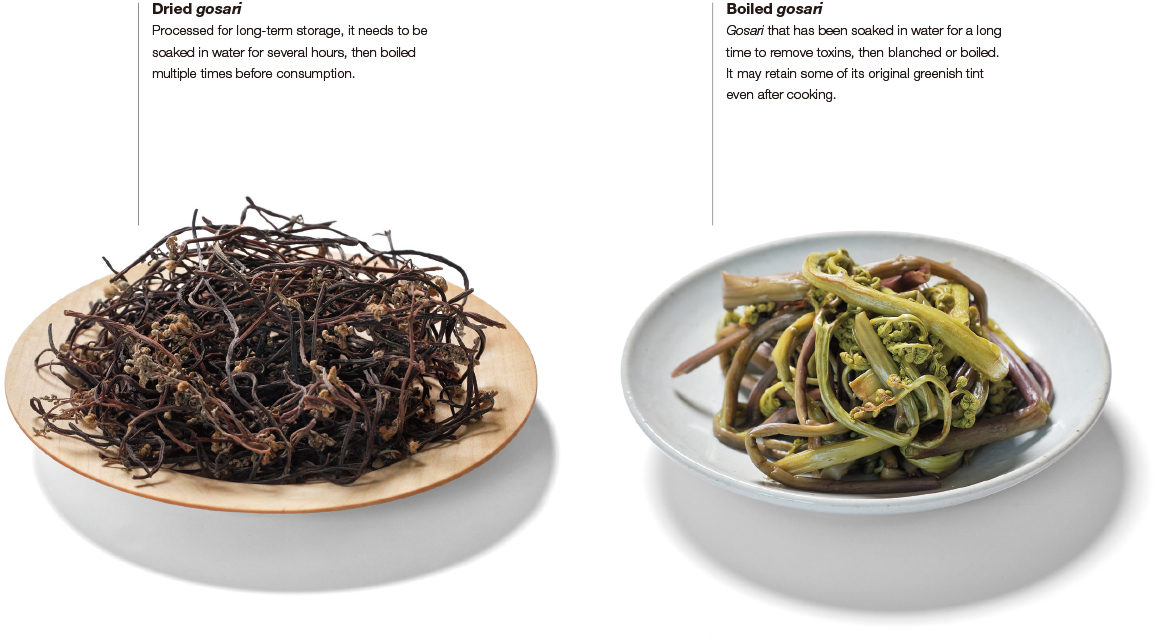
Arguably the most popular Korean preparation that makes use of gosari is gosarinamul, often enjoyed as a banchan (side dish) at meal-times. To make this, cooks usually pan-fry fiddleheads with ganjang (soy sauce) and sesame oil, sometimes adding garlic and scallions.
Gosari is a popular ingredient in bibimbap: steamed rice topped with vegetables and herbs—and usually mixed at the table with a spoonful of hot pepper paste. Gosari is also used to make yukgaejang, a famously spicy shredded beef stew. Some diners note that it can be hard to tell the strands of shredded beef and the gosari shoots apart, so similar is their texture and color when cooked.
For this reason, vegetarian and vegan cooks have started using gosari as a meat replacement in Korean dishes that traditionally use beef. Examples include the aforementioned yukgaejang, which can be made vegan by using mushrooms in place of meat—and plenty of gosari.
Gosarinamul (bracken salad) is often served at jesa ceremonies, annual memorial services to honor deceased relatives and ancestors. The jesa ceremony has its roots in ancient, animist Korea. In honor of their ancestors, Koreans would prepare a table laden with specific food. Much of this food has symbolic value, with gosari prized here for its distinctive brown hues. Modern Koreans still uphold these traditions, and often prepare or buy gosarinamul for jesa ceremonies.
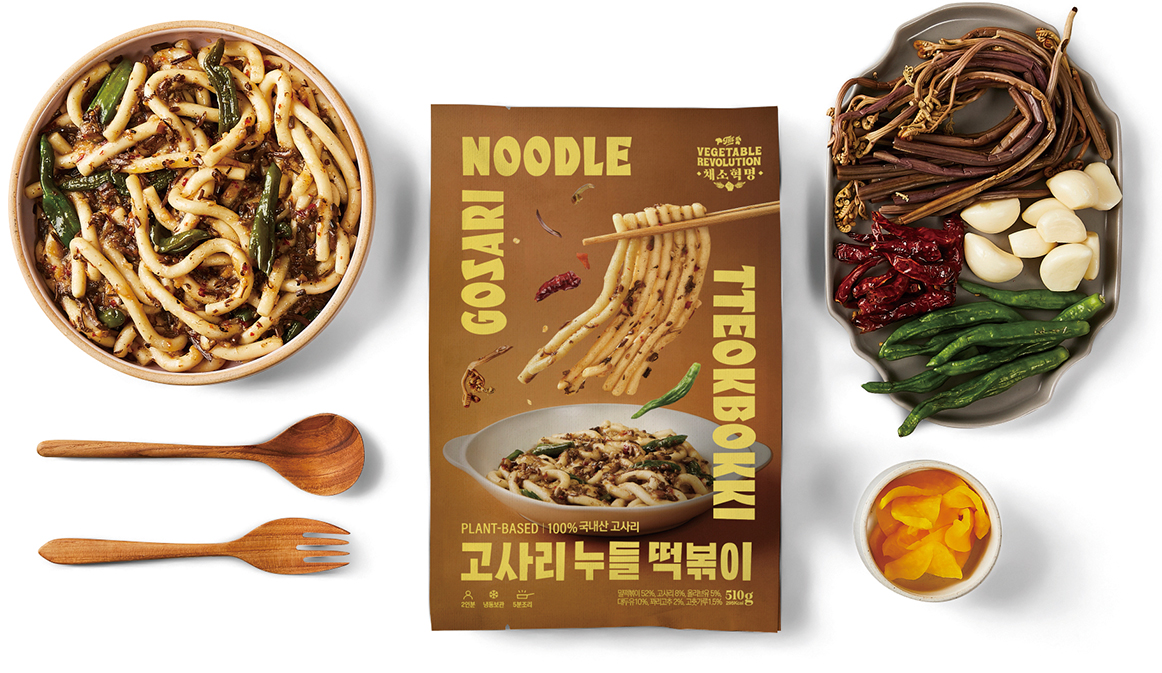 Gosari noodle tteokbokki (stir-fried rice cake) from Badcarrot, featuring plant-based dishes with bracken as the main ingredient. / © Badcarrot.
Gosari noodle tteokbokki (stir-fried rice cake) from Badcarrot, featuring plant-based dishes with bracken as the main ingredient. / © Badcarrot.
Bracken shoots are used as an ingredient in other parts of East Asia. But it is also consumed much further afield. In parts of Europe, starch-rich bracken rhizomes were once frequently ground into flour to make bread or a thick gruel. Indigenous peoples in parts of Oceania once used bracken rhizomes as an energy-boosting staple to feed hunting parties while they were on the move.
In parts of Asia, including India, fiddleheads are sometimes salt-preserved or pickled in vinegar. Cooks in some Indian regions add them to stir-fried preparations, while some diners in the Philippines add a similar type of fern frond to their salads. In some Far East Asian nations, meanwhile, fiddleheads are even used to make desserts.
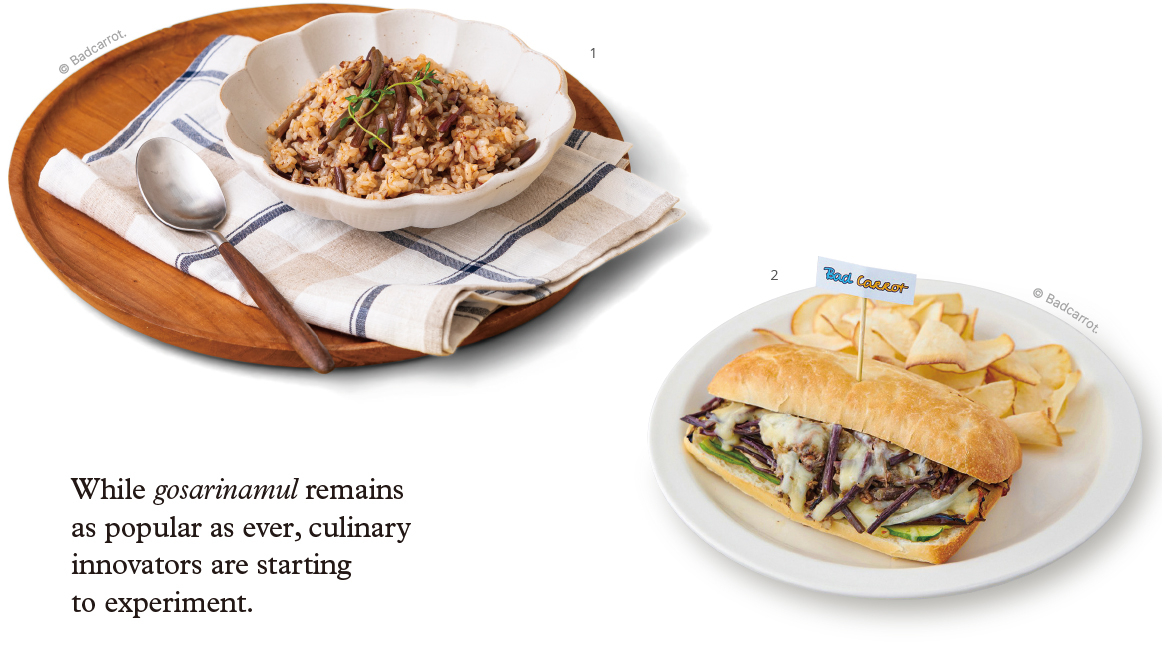 1. Fried rice with gosari oil pasta sauce.
1. Fried rice with gosari oil pasta sauce.
2. Panini made with gosari pesto.
But the popularity of Korean-style gosarinamul has spread to other countries. These include Russia, where “Paporotnik po-Koreyski” (Korean-style fern) has been a common dish for decades, particularly in Siberia and other eastern areas.
And as more diners in other parts of the globe continue to embrace Korean food, gosari preparations are now finding a foothold among foodies from Frankfurt to San Francisco. Dried gosari is now a mainstay in international speciality food stores—perhaps it won’t be long before you can find it on supermarket shelves all over the world.
As the world of food becomes ever more globalized, some modern cooks—in Korea and beyond—are starting to use gosari in surprising new ways. While gosarinamul remains as popular as ever, culinary innovators are starting to experiment. Some fry gosari with pork belly, leeks and garlic for a unique take on samgyeopsal (grilled pork belly, widely known as Korean barbecue). You could also try it in non-Korean recipes, and join the legions of cooks now incorporating these taste-filled ferns into their pasta creations.
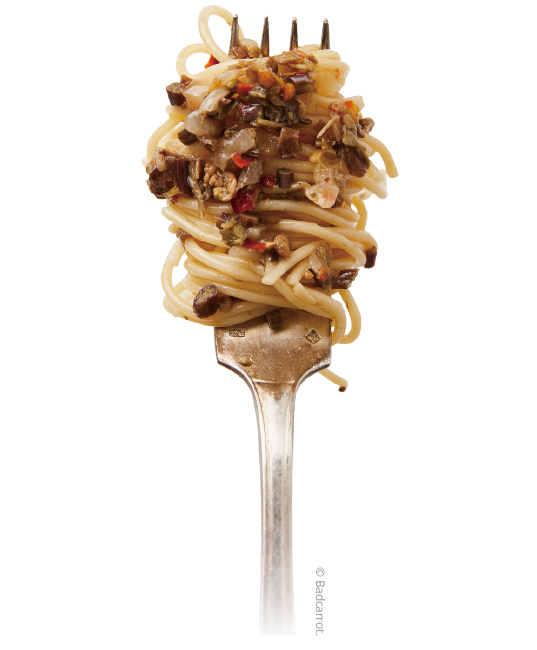
200 g beef brisket, 2 stalks of green onions, 80 g oyster mushrooms, 100 g boiled gosari, 100 g bean sprouts, 600 ml beef broth, 600 ml water, 2 Tbsp ganjang (soy sauce) for soup, 1 Tbsp sesame oil, 1 Tbsp vegetable oil, 2 Tbsp red pepper powder, 1 Tbsp minced garlic
